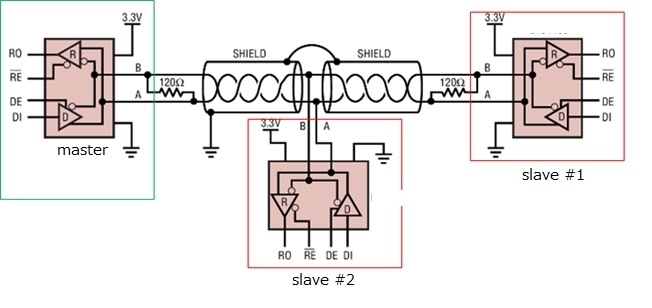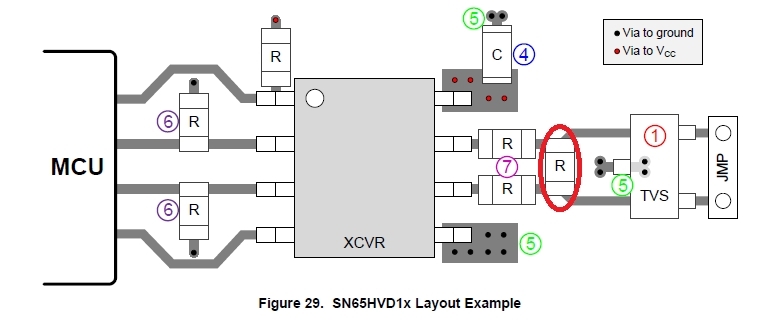Hi Experts,
Could you please support questions SN75HVD11D from my customer below?
1. In case of implementing ESD protection with referring the figure in datasheet below, where is the best place to implement the termination resister? Could you share its reason also?
2. In case of a RS-485 connection shown in the figure below, Will the communicatin performace be better if the branching point for slave #1 and slave #2 is closer to make the distance minimum between slave #1 and slave #2? Could you share its reason also?
Regards,





